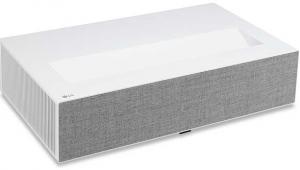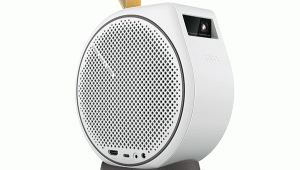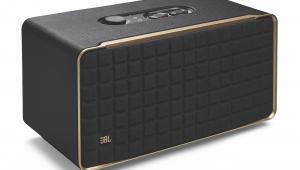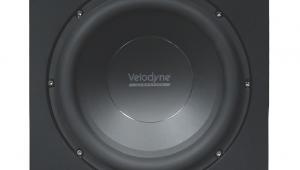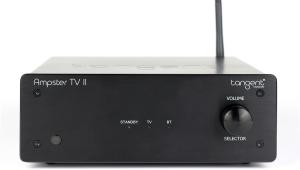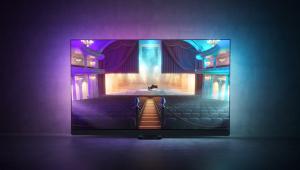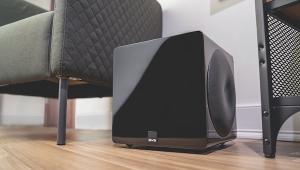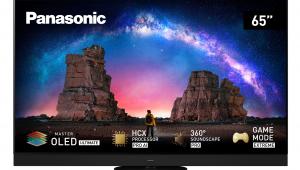InFocus SP8604 review
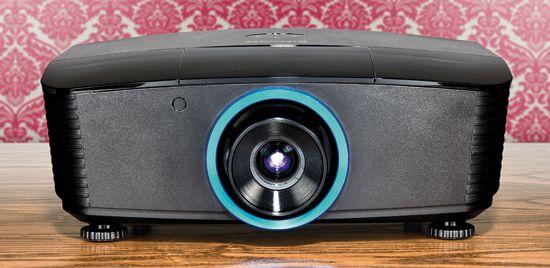
InFocus has developed a reputation over the years for not being afraid to be different. A few years ago, its original ScreenPlay and subsequent Play Big projector ranges arguably revolutionised the way affordable projectors were designed for the home market.
Perhaps, though, this spirit of innovation went a bit far with the brand’s previous projector, the SP8602. For, while its provision of swappable, different-coloured top panels and an glowing power light around the lens were designed to make the projector more home friendly, they also felt a bit, well, mad.
So, it’s oddly reassuring to find the SP8604 heading back to more conservative and restrained territory. In fact, there’s even a small argument for saying that the latest offering is a little too conventional. But I’m getting ahead of myself.
Big hunkThe SP8604 is passably attractive so long as you don’t mind your kit having a bit of size to it. It’s got plenty of curves and its top edge gleams with a high gloss black finish, but its footprint is large and it stands quite tall. The height is largely explained by the impressive and promising size of the centrally mounted lens.
Under a panel on the top edge can be found simple horizontal and vertical image shift ‘wheels’ to help you position the image correctly on your screen. The optical zoom is rather limited at 1.25x, but this is offset by the fact that this projector is available with short, medium or long-throw lens options.
One final notable SP8604 design element is a striking metallic blue ring sitting right around the lens. This, of course, harks back to the illuminated neon blue ring of the SP8602, but thankfully, this blue ring is just metal, with no colour-cast-creating lighting. The blue circle around the lens does take on more importance than it would normally warrant, though, when you realise that it’s pretty much the only aesthetic point of difference between the SP8604 and another projector we tested a while back, Vivitek’s H5080. Clearly these two PJs have a degree of common heritage – not unusual in the affordable projection world these days. The SP8604‘s similarities with Vivitek’s impressive mid-range model continue with its connections, notably the provision of three HDMIs when most models only have two.
Also notable at this market point are USB and RS232 control jacks for integrating the projector into a wider AV system, plus two 12V trigger outputs that come in very useful for powering up/down secondary kit such as a motorised screen.
Even the SP8604’s onscreen menus bear distinct similarities to those of the H5080. But there are a few feature differences, too.
Vive la differenceAs even entry-level projectors tend to offer startlingly expansive toolsets these days for fine tuning their pictures, it’s no surprise to find the mid-range SP8604 covering pretty much all the bases you (or even a professional installer) could hope for.
For starters, as well as a trio of reasonably well considered picture presets, you get three memory slots for storing your own settings – for different inputs, or types of source material, for example.
An ‘advanced’ picture menu, meanwhile, plays host to such enthusiast tricks as gamma and flesh-tone adjustments, no fewer than 10 different manual iris settings, and the ability to adjust the gain, saturation and hue of not just the three primaries, but also secondary colours of cyan, magenta and yellow.
I was also intrigued to find both a Motion Smoothing system and something called DynamicBlack. The latter is an auto-iris system for adjusting brightness ‘on the fly’ to deliver a wider contrast range. While I’m used to finding such iris arrangements on LCD projectors, DLP projectors often just stick with manual iris adjustments due to their innately superior contrast potential.
So far, while the SP8604 is well-specified, I haven’t found anything truly innovative or groundbreaking. And we guess the same can be said of its performance. But does this matter? Nope.
For the bottom line is that the SP8604 produces a performance at least as good as that of the Vivitek H5080, while costing (on current prices) not far shy of £500 less. A price that includes a five-year parts warranty. So on price, at least, the SP8604 really does appear to break new ground after all, and in arguably the most welcome way possible.
A number of things stand out in particular about the SP8604’s performance for its money. Colours enjoy real ‘pop’ and vibrancy, with intense, full saturations being underpinned superbly by a really impressive black level response.
Well, at least the black level is impressive after a little work – namely, deactivating the DynamicBlack feature (as it causes distracting brightness shifts), and setting the manual iris to around level four.
Also striking with Tron: Legacy on Blu-ray is how immaculately sharp the SP8604’s pictures are. Detail levels are high, edges look crisp without seeming forced, and best of all this is achieved without the picture being accompanied by the sort of fizzing, dotting noise that can sometimes plague very sharp images – especially with DLP projectors.
The SP8604’s DarkChip 3 DMD and six-segment colour wheel work together beautifully, meanwhile, to ensure there’s practically no sign of single-chip DLP’s rainbow effect problem. Tron: Legacy’s heavy use of bright objects against dark backgrounds could have been designed to trip DLP projectors up in rainbow terms, but the SP8604 emerges at the end of the film almost completely unscathed.
Motion is handled decently well for the most part too. I personally chose to leave the Motion Smoothing feature turned off, as it tends to cause a few rather obvious unwanted side-effects such as haloing around Tron...'s ‘bikes’ as they hurtle across the screen. But even without Motion Smoothing, the image only exhibits what feel like pretty natural, filmic levels of judder; there doesn’t seem much in the way of extra judder introduced by the optical engine.
You can get more colour blend finesse and contrast if you step much further up the projection price ladder, and it’s impossible to ignore the fact that an extra grand would get you JVC’s awesome, 3D-capable DLA-X3. Plus, the SP8604 has a couple of issues: it can run a bit noisily, especially if you make the mistake of running its lamp on its brightest setting, and I noted a curious blue haloing around the edges of bright objects during swift camera pans (of the sort typically seen while playing FPS console games).
But none of this alters the fact that the SP8604 is better than it really ought to be for £2,500. If this sort of high-value approach proves symptomatic of InFocus’ latest assault on the UK PJ market, I look forward to see what it does next.
HCC VERDICT
InFocus SP8604
Price: £2,500 Approx
Highs: Very punchy pictures; little video noise; great value
Lows: Blue haloing during very fast camera pans; DynamicBlack and Motion Smoothing aren’t great
Performance: 4/5
Design: 4/5
Features: 4/5
Overall: 4/5
Specifications
3D Ready: no
HD Ready: yes 1080p, can handle 1080p/24
Component video: yes 1 HDMI: yes 3 (v1.3)
PC input: yes (D-Sub) 12V trigger: yes x 2
Resolution: 1,920 x 1,080
Brightness (claimed): 1700 Lumens
Contrast ratio (claimed): 30,000:1 (with DynamicBlack)
Dimensions: 430(w) x 181(h) x 343(d)mm Weight: 8.6kg
Features: Primary and secondary colour management; x1.25 optical zoom; short/med/long throw lens options; high/low lamp modes; noise reduction; motion processing; gamma settings; 5-year warranty on parts; BrilliantColour; colour temp adjustment; fleshtone adjustment
 |
Home Cinema Choice #351 is on sale now, featuring: Samsung S95D flagship OLED TV; Ascendo loudspeakers; Pioneer VSA-LX805 AV receiver; UST projector roundup; 2024’s summer movies; Conan 4K; and more
|








